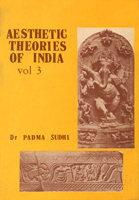|
After examining Sanskrit texts and vernacular literatures, the author found conclusively that every aesthetic theory was entwined in Yoga activity. 'Yoga is the fountain head of Indian Aesthetics'. It is the record of Self where thoughts, words and deeds are harmonized and transformed into artistic vibrations. An artist practices tranquility in turmoil, self-control in self-indulgence through Yoga that leads to the evolution of an integral personality. This book summarizes how the controlled practice of the five senses are glorified in various art forms, performing and pictorial, plastic and tribal.
|
 |
Mr. Baumgarten of Germany introduced the topic aesthetics in 1842 in Europe. He became renowned guru of his subject & later on, several European countries and America became his ardent followers of the subject, authors like KIERKEGAARD, SARTRE, CAMUS & Others. In India, after independence many Indian authors who were Sanskrit erudites, found that Vedic and Classical Sanskrit literatures, Pāli and Prākṛt languages, and rich ancient literatures had already established aesthetical trends and views. Observing western aesthetics, they elucidated all the Indian aesthetic values of their different treatises through research. The four aims of Indian life like Dharma, Artha, Kāma, and Moksha are covered in the study of aesthetics with predominant focal points of Kāma and Moksha.However, in the third volume she concluded through her research analysis that Yoga-activity is the Fountain head of Indian aesthetics.
|

